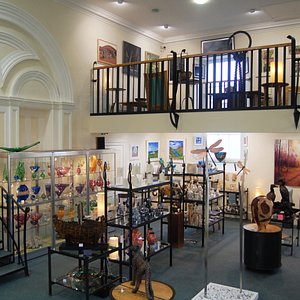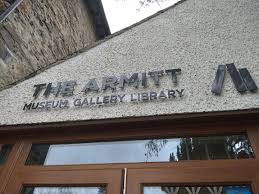Profile
The contents of The Armitt collection – books, records, photographs, artworks and other material – is displayed and interpreted to reflect the social history of the neighbourhood in the wider context of the development of the Lake District as a whole. Life in the present-day Lake District is dominated by tourism and outdoor activities. This pattern of life became established around 100 years ago. The preceding century saw the discovery of the Lake District by a small band of writers and artists. In the century before that, the industrial revolution, through the use of water power, had made Ambleside a centre of industrial activity weaving woollen cloth. In even earlier times the Romans built a staging post at the head of Windermere and stone axes were manufactured in Langdale. All these developments are featured in the Armitt collection.
The original Armitt library was founded in 1912 by historian and naturalist Mary Armitt, as a subscription reference library. There was no public library in Ambleside and, apart from a few motor cars and a handful of telephones, communication had hardly changed since Wordsworth’s day. The new library was meeting a need. About 10 years after it opened, a significant collection of early works about the Lake District was bequeathed to the Armitt. The three principal collections of these works are at King’s College Cambridge, the British Library and the Armitt. Then in 1943, following the death of Beatrix Potter, the acquisition of her scientific watercolours of fungi and other material enhanced its reputation. In the 1970s, the lease on the Armitt’s premises ran out and it was obliged to seek temporary accommodation in the then-new public library. This was a very unsatisfactory arrangement and eventually, through dint of fundraising, the present building was opened in 1997.
As directed in Mary Armitt’s will, and like some other libraries, the Armitt also collected artefacts relevant in the recording of local history. This material formed the basis for the museum display that was created alongside the library in the new building. The Armitt is housed in an extension to the stable block of the Scale How estate, which was the home and workplace of Charlotte Mason. A pioneer in the education of young women, Mason’s archive is now part of the Armitt collection. In recent years, a major collection has been built up of the works of Kurt Schwitters, the avant-garde émigré artist who spent the last four years of his life living in Ambleside. In a significant addition to the collection, the Fell and Rock Climbing Club of the English Lake District (FRCC) has placed its library of mountaineering literature in the Armitt and is available for public reference. They have also added to the Armitt’s very large photographic collection.
Map
Sorry, no records were found. Please adjust your search criteria and try again.
Sorry, unable to load the Maps API.



